| Views of Guy Works. By David Townsend |
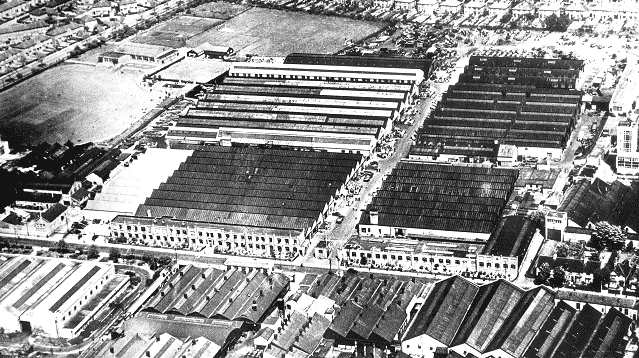
An aerial view of the factory with Park
Lane in the foreground.
These photographs are from a collection I was given by the Guy
works photographer, at the time Guy's finally closed. They would
have been taken for publicity purposes or record purposes, and seem to date from the late 1940s or early 1950s.
The tour of the works starts with the aerial photo above, which
shows the following:
|
Top left |
Low Hill estate |
|
Centre left |
Guy's sports ground: the upper
section is the football ground, with tennis courts
to the left; the lower section is the cricket
ground; between them is the bowling green the sports
pavilion and the new works canteen |
|
Centre right |
The area behind the factory is 'the
field' used as a parking area for any vehicles
awaiting attention in the works |
|
Middle left |
The works of ABC Coupler, which after closure,
was acquired by Jaguar and became the Guy service department |
|
Middle centre |
Guy's works. The white topped
building to the left was built when Sunbeams were
incorporated into Guys, and known as the Sunbeam
Machine Shop. It contained the machinery bought over
from Sunbeam. The high, white-topped building across
the top of the works was built as a double decker
bus body shop and known as 'The Hangar'. The buildings
facing Park Lane contained all the offices,
including the drawing office |
|
Middle right |
Part of Henry Meadows works, with
the Park Lane entrance running alongside the Guy
works. The houses between Meadows' works and Park
Lane may have been owned by Meadows |
|
Bottom left |
The bus depot |
|
Bottom right |
Every Ready |
|
|
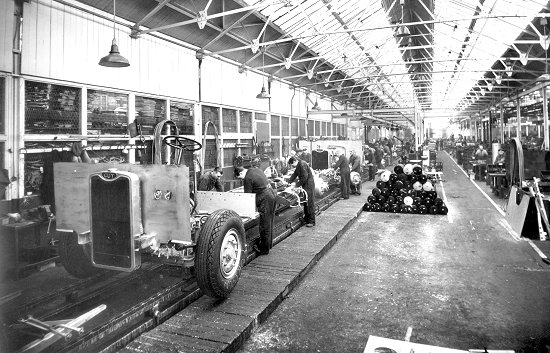
The Heavy Track. At this time it would only have taken buses,
as no heavy lorries were being made. Later it would have
taken 'Invincibles', 'Warriors' and, eventually, 'Big Js' and Leylands. Guy was the first heavy vehicle manufacturer in the country to
install a 'track', which was a kind of conveyor belt moving the
vehicles along the production line.
|
|
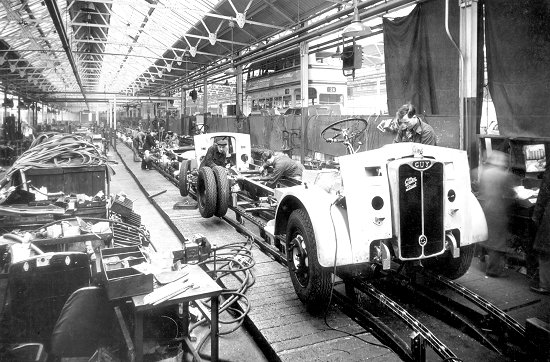
The end of the Light
Track, which took 'Otters', 'Vixens' and
'Wolfs'. Here is an 'Otter' diesel at the
last stage, which included fitting
tyres, controls and radiators. In the background is one of the 100
'Arab' buses supplied to Birmingham
Corporation, probably back in the works
for adjustments after running in. |
|
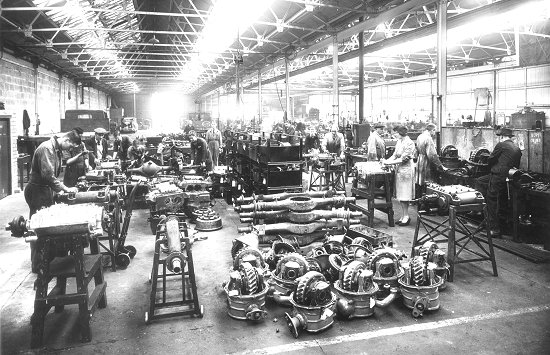
The Service Department section which undertook the overhaul and
repair of components. |
|
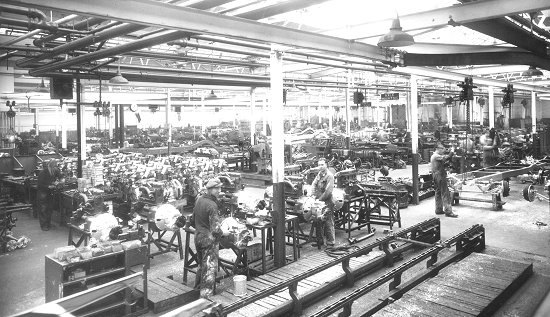
Across the bottom of the
photo is the start of the Light Track,
on which lighter vehicles were
assembled. To the right is a 'Vixen'
chassis about to go on to the track,
where the first thing to be fitted is
the engine. On the centre left the Heavy Track
started, and there is a bus chassis about
to go on to it. The whole area at the
back of the photo is the Assembly Area. |
|
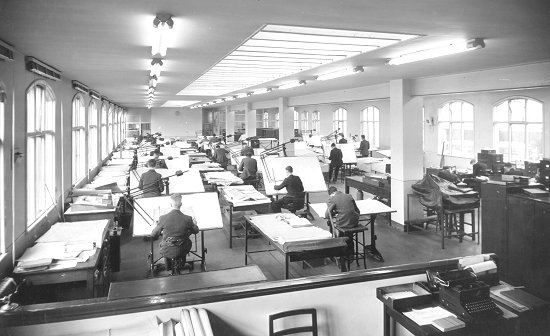
The Drawing Office. This room was originally the canteen. The
Drawing Office moved there when a new canteen was built on the
Sports Ground. |
|
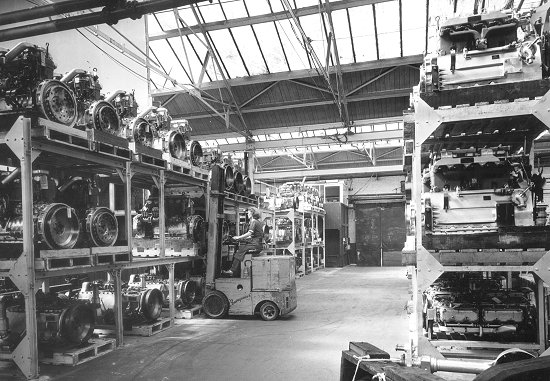
The Parts Store with the main roadway leading into the Machine
Shop. On the floor are Gardner HLW engines, and in the racks are GLWs. The stocks may seem large but at that time engines were
hard to come by, and you bought as many as you could, when you
could. |
|
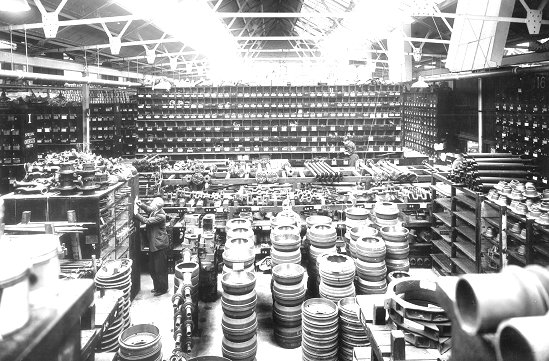
The Spare Parts Stores. Guy always seemed to carry a very
large stock of spares. |
|

Anti-aircraft guns in
'The Hangar', the part of the works
originally built for building bodywork
for double decker buses. The guns were being refurbished and
adapted for radar guidance under a
contract with the Ministry of Defence. This sort of contract probably followed
on from war time work for the Ministry
on such items as armoured cars. |
|
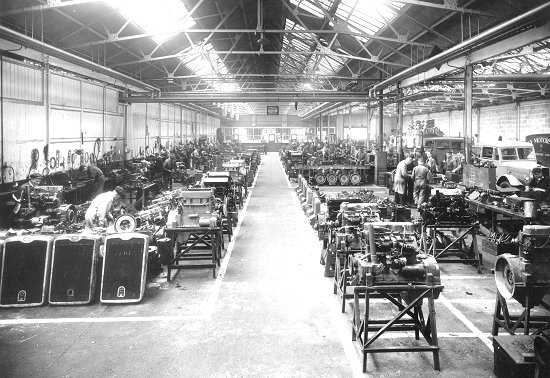
The Service Department section which undertook engine
reconditioning. The engines are Guy and Meadows petrol
engines. |
|
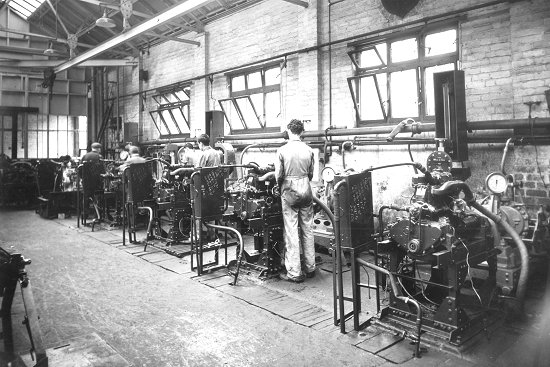
The Engine Test House. These are petrol engines being run in,
tested and tuned. |
|
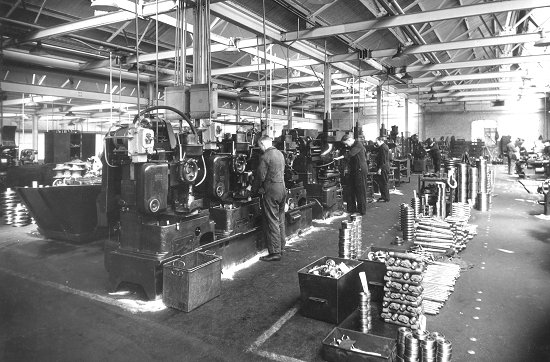
Gear cutting machines, middle floor. |
|
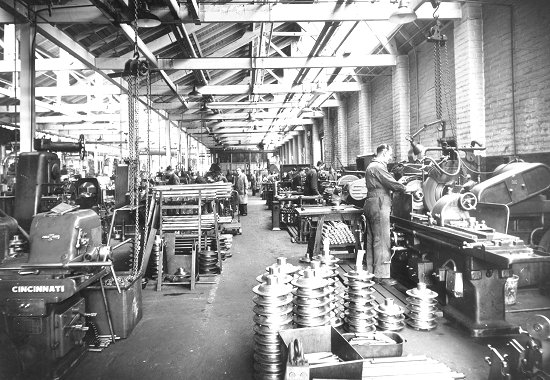
Top floor. On the right are large plain cylindrical grinding
machines doing a chucking job. In the bottom right hand corner
is a balancing stand for the grinding machines. Cincinnati
machines on the left. |
|
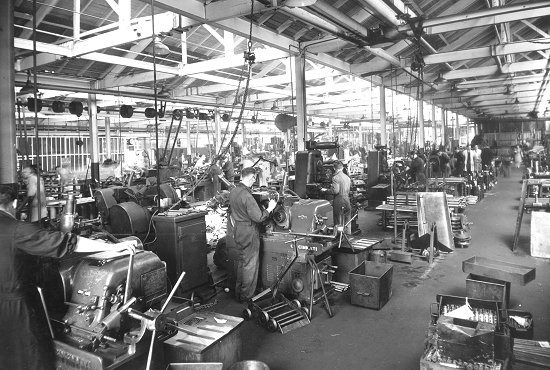
The Machine Shop, top floor. On the left, note the overhead
drive shaft, but there is only one belt in place. By this time
belt drives were rapidly going out of use in most factories. |
|
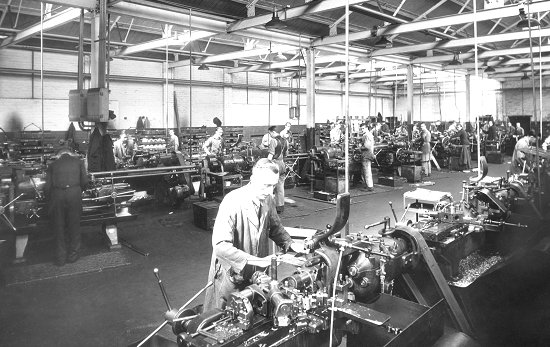
The Machine Shop. In the background are Herbert continuous feed
machines. |
|
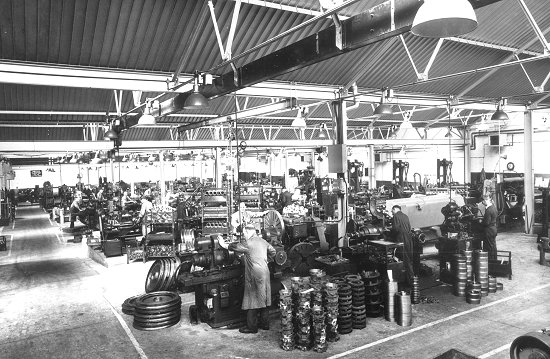
The Sunbeam Machine Shop which contained all the machines which
were brought over from Blakenhall when the Sunbeam works were
closed. |
|
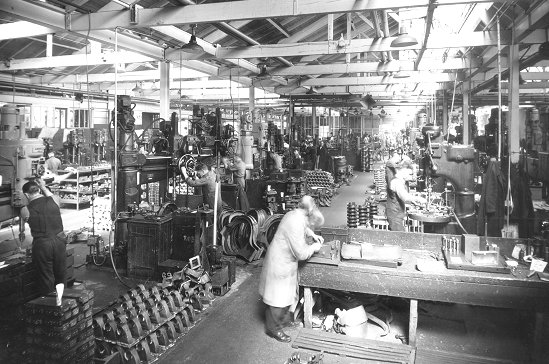
The radial driller section, top floor. In the centre are pillar
drills with swinging arms. On the far left are light drillers. In the foreground two inspectors are checking a component. |
|
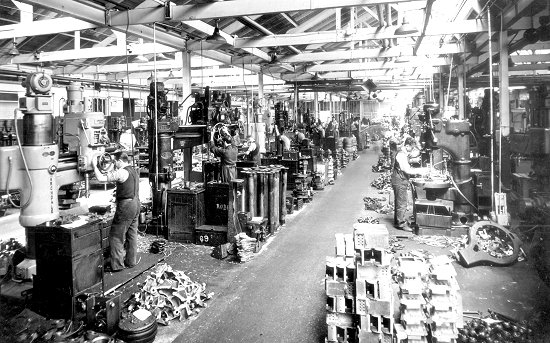
This is the same section on a different
occasion. |
|
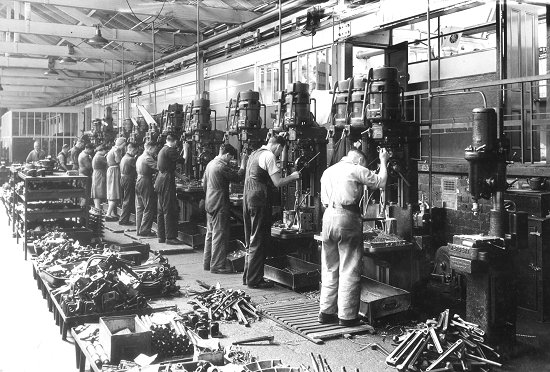
Machine shop (top
floor), light drillers section. In the raised area behind the
machines are the foremen's offices, the
work's barber shop, and a ladies' rest
room. |
|
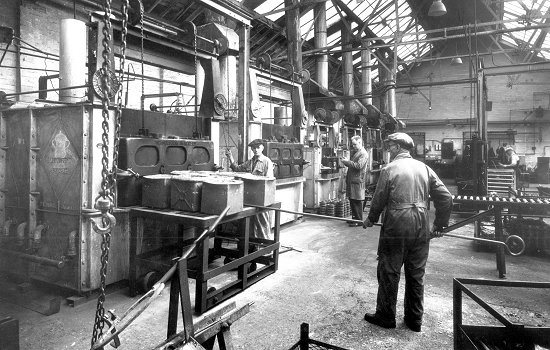
Hardening Shop, heat treatment furnaces. The foreman in the
middle of the photo is George Dyson. He was noted as an avid
fan of Hank Jansen's western novels, copies of which he always
had around the works. |
|
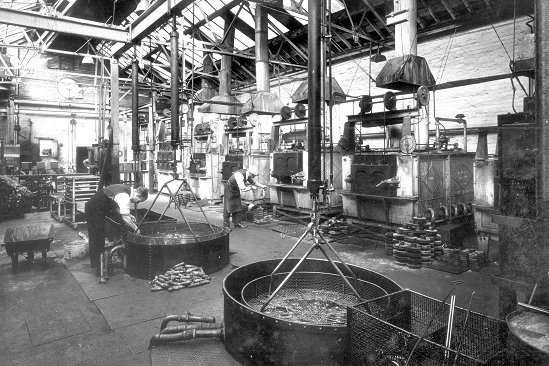
Another view of the Hardening Shop. Hardening was done by a
variety of methods, including oil hardening and cyanide
hardening. |
|
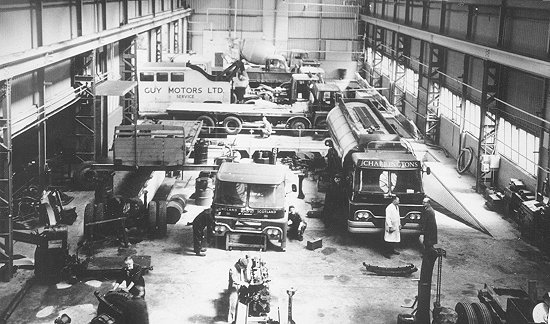
The Service Department. |
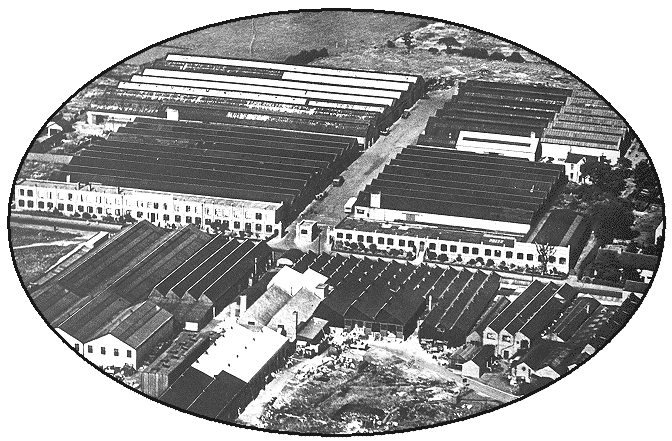
A final view of the factory.
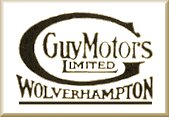 |
|
 |
|
 |
Return to
The End of Guy Motors |
|
Return
to the
beginning |
|
Proceed to
Images of Guy Vehicles |
|